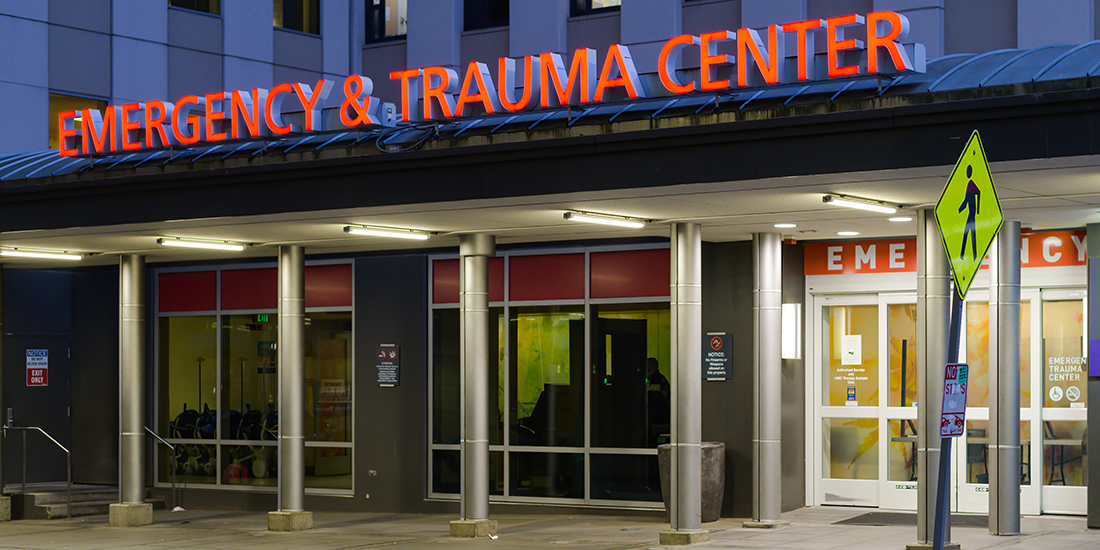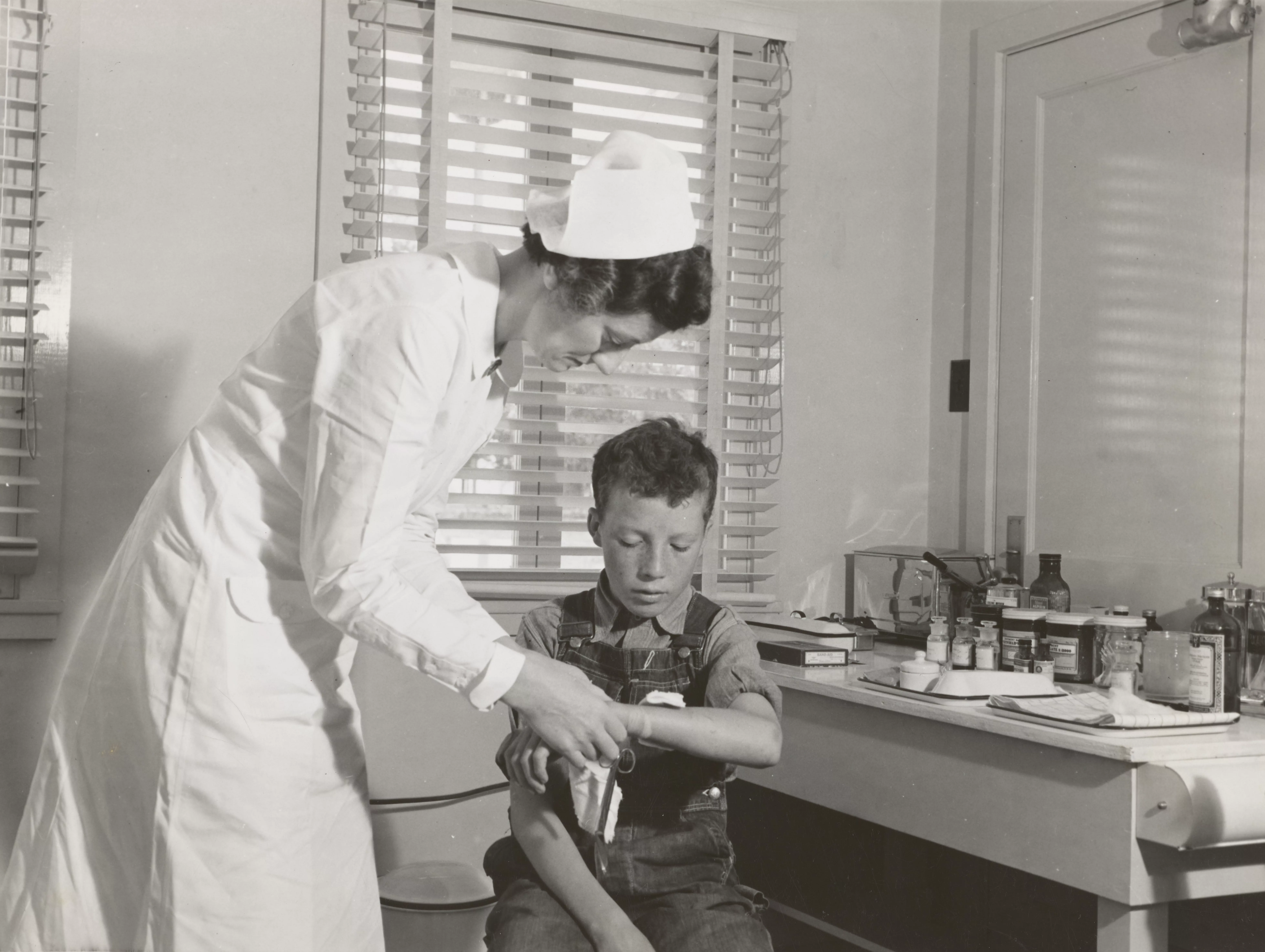Most recently published

An Opportunity Beckons: Converging Disaster Recovery and Infrastructure Resilience
Dennis R. Schrader
December 2, 2009
Prevention – of terrorist attacks and/or other mass-casualty incidents – is and must be the first priority in homeland security. But when, not if, prevention fails, as it sometimes will, recovery and resilience move to center stage. The problem is that much has been accomplished in those areas, but much

Destination Decisions: Back to the Future, Again and Again
Joseph Cahill
December 2, 2009
Ambulance drivers, EMTs, and other responders may not yet be able to perform brain surgery or heart transplants at the accident scene – but that time might be not too far off, thanks to rapid and continuing advances in medical technology, ultrasound and data-retrieval systems, and other scientific breakthroughs.

DMORT Teams and Their Role in MFIs
Frank P. Saul
November 24, 2009
Recent-year increases in the number of mass-fatality incidents, combined with the increasingly bizarre nature of some of those incidents, have led to the formation of specially trained medico-legal teams to deal with the on-site aftermath. This is their story, which is more complicated, and sophisticated, than anything seen on national

Expanding the Definition of Public Health
Raphael M. Barishansky
November 24, 2009
The field of medicine has come a long, long way from the early 20th-century tradition of family doctors, homespun remedies, and much lower life expectancies. People are healthier today, and usually live longer lives, but the technology of terror also has grown exponentially, creating a need for a new public-health

Iran’s Long Reach Into the U.S. Homeland
Neil C. Livingstone
November 24, 2009
Despite U.S. moves to improve nation-to-nation relations with Iran, Tehran continues to support groups and organizations obviously unfriendly to the United States – the Alavi Foundation, for example. It is clear, moreover, that the anti-U.S. virus is spreading, with Somalia and other countries joining the international junta facing the free

Supply on Demand: The Strategic National Stockpile
Kate Rosenblatt
November 18, 2009
One of the most important, best managed, but only theoretically “secret” weapon in the U.S. defense arsenal is the Strategic National Stockpile (of medicines, pharmaceuticals, and other life-saving goods and materials needed to counter biological and/or chemical “incidents,” including terrorist attacks). Fortunately, this weapon is designed to save lives, not

Case Study: Influenza Preparedness in Marin County
Mary Lilley
November 18, 2009
Something like an earthquake – not as loud or as immediately terrifying, but longer lasting and immensely more lethal. That is more or less how the leaders of California’s Marin County viewed the approach of the H1N1 pandemic, and why they were so determined to take whatever measures were needed

Biopreparedness and the Hydra of Bioterrorism
Diana Hopkins
November 11, 2009
Science is wonderful! Except when it is not. One of the almost inevitable problems facing researchers in the biological sciences is how to ensure that their discoveries are used to benefit mankind. Unfortunately, achieving that enviable goal may be a true Mission Impossible.

Mortuary Services & The Lessons Learned From Real-Life Tragedy
Jennifer Smither
November 11, 2009
First responders do their utmost to save the lives of those seriously injured in mass-casualty incidents. Medical examiners and local volunteers have what is sometimes a more difficult job: identifying the bodies, “processing” the remains, and notifying the victims’ families.

New and Emerging Al Qaeda Threats
Neil C. Livingstone
November 11, 2009
The term “global war on terrorism” is now politically incorrect, in at least some circles. There is mounting evidence, though, that some terrorists do not agree and are already planning new attacks against domestic targets on the U.S. homeland.

Ham Radio – An Emergency Tool for Public Health
Barry Kanne
November 4, 2009
Many citizens served their communities heroically in the aftermath of Hurricane Katrina, and some of their stories are well known – but most of them remain untold. One of the still relatively unknown heroes is a legally blind New Orleans jazz musician, who also happens to be an amateur radio

Field-Based Patient Tracking: Real-Time Data Sharing Comes of Age
Rodrigo (Roddy) Moscoso
November 4, 2009
The old saying that the job “”isn’t done until the paperwork has been completed”” is particularly true if the “paperwork” data – vital signs, indications of internal bleeding, etc., collected at the scene of a car accident or other incident – is somehow lost before, during or after the patient’s

Party Crashers Should Go From White House to Big House
Bradley A. Blakeman
December 9, 2009
Allegations, accusations, denials, congressional hearings, alleged cover-ups, and a raft of unanswered questions. That is the residue (so far) of one of the most publicized and, for practical purposes, least substantive “news stories of the year.” There are, though, a few “actual facts,” so to speak, that might also be

An Opportunity Beckons: Converging Disaster Recovery and Infrastructure Resilience
Dennis R. Schrader
December 2, 2009
Prevention – of terrorist attacks and/or other mass-casualty incidents – is and must be the first priority in homeland security. But when, not if, prevention fails, as it sometimes will, recovery and resilience move to center stage. The problem is that much has been accomplished in those areas, but much

Destination Decisions: Back to the Future, Again and Again
Joseph Cahill
December 2, 2009
Ambulance drivers, EMTs, and other responders may not yet be able to perform brain surgery or heart transplants at the accident scene – but that time might be not too far off, thanks to rapid and continuing advances in medical technology, ultrasound and data-retrieval systems, and other scientific breakthroughs.

DMORT Teams and Their Role in MFIs
Frank P. Saul
November 24, 2009
Recent-year increases in the number of mass-fatality incidents, combined with the increasingly bizarre nature of some of those incidents, have led to the formation of specially trained medico-legal teams to deal with the on-site aftermath. This is their story, which is more complicated, and sophisticated, than anything seen on national

Expanding the Definition of Public Health
Raphael M. Barishansky
November 24, 2009
The field of medicine has come a long, long way from the early 20th-century tradition of family doctors, homespun remedies, and much lower life expectancies. People are healthier today, and usually live longer lives, but the technology of terror also has grown exponentially, creating a need for a new public-health

Iran’s Long Reach Into the U.S. Homeland
Neil C. Livingstone
November 24, 2009
Despite U.S. moves to improve nation-to-nation relations with Iran, Tehran continues to support groups and organizations obviously unfriendly to the United States – the Alavi Foundation, for example. It is clear, moreover, that the anti-U.S. virus is spreading, with Somalia and other countries joining the international junta facing the free

Supply on Demand: The Strategic National Stockpile
Kate Rosenblatt
November 18, 2009
One of the most important, best managed, but only theoretically “secret” weapon in the U.S. defense arsenal is the Strategic National Stockpile (of medicines, pharmaceuticals, and other life-saving goods and materials needed to counter biological and/or chemical “incidents,” including terrorist attacks). Fortunately, this weapon is designed to save lives, not

Case Study: Influenza Preparedness in Marin County
Mary Lilley
November 18, 2009
Something like an earthquake – not as loud or as immediately terrifying, but longer lasting and immensely more lethal. That is more or less how the leaders of California’s Marin County viewed the approach of the H1N1 pandemic, and why they were so determined to take whatever measures were needed

Biopreparedness and the Hydra of Bioterrorism
Diana Hopkins
November 11, 2009
Science is wonderful! Except when it is not. One of the almost inevitable problems facing researchers in the biological sciences is how to ensure that their discoveries are used to benefit mankind. Unfortunately, achieving that enviable goal may be a true Mission Impossible.

Mortuary Services & The Lessons Learned From Real-Life Tragedy
Jennifer Smither
November 11, 2009
First responders do their utmost to save the lives of those seriously injured in mass-casualty incidents. Medical examiners and local volunteers have what is sometimes a more difficult job: identifying the bodies, “processing” the remains, and notifying the victims’ families.

New and Emerging Al Qaeda Threats
Neil C. Livingstone
November 11, 2009
The term “global war on terrorism” is now politically incorrect, in at least some circles. There is mounting evidence, though, that some terrorists do not agree and are already planning new attacks against domestic targets on the U.S. homeland.

Ham Radio – An Emergency Tool for Public Health
Barry Kanne
November 4, 2009
Many citizens served their communities heroically in the aftermath of Hurricane Katrina, and some of their stories are well known – but most of them remain untold. One of the still relatively unknown heroes is a legally blind New Orleans jazz musician, who also happens to be an amateur radio
Expanded Duty for EMS Techs: Tactical Decisions
Joseph Cahill
October 28, 2009
Most medium-sized or larger U.S. communities are now better prepared than ever before to cope with “routine” incidents such as car crashes and motorcycle accidents. But a much smaller number is able to deal with truly major incidents that stress not only the rescue equipment available but also the skills
Expanded-Duty EMS: Heavy Rescue
Joseph Cahill
October 28, 2009
Most medium-sized or larger U.S. communities are now better prepared than ever before to cope with “routine” incidents such as car crashes and motorcycle accidents. But a much smaller number is able to deal with truly major incidents that stress not only the rescue equipment available but also the skills
Communicating With the Public During a Pandemic Influenza
Amanda Rhyne and Sarah Weiss
October 28, 2009
The United States is home to probably the most ethnically diverse population in the world. That is a blessing in many ways – but it poses major difficulties for emergency-management officials and other leaders in times of crisis, when the responsibility of warning the public becomes a polyglot challenge.
Telemedicine: Funding Increases & Rapid-Paced Development
Diana Hopkins
October 21, 2009
It started with extremely low-tech audio communications, and in recent years telemedicine technology has spawned a spectrum of much more advanced systems and devices that are of literally life-or-death importance to many citizens in distress. But the paperwork – specifically including development and performance standards – has not kept up.
HLS & EM: Blueprinting the Future
Dennis R. Schrader
October 21, 2009
Today’s homeland-security and emergency-management professionals are highly skilled and exceptionally well motivated. Their second most important goal, though – after keeping the nation safe – is to ensure that their second- and third-generation successors are even more competent and capable than the first-generation leaders now setting the pace.
SAMU & EMS: The Principle Differences
Joseph Cahill
October 14, 2009
The goal is the same – doing the most good for the most patients. But there are several significant, and perhaps educational, differences between the way that French medical-response units are trained and operate as compared with their American counterparts.
NIMS & ICS: The Next Level
Stephen Grainer
October 14, 2009
The Department of Homeland Security (DHS) resumed the “next” series of its NIMS (National Incident Management System) Incident Command System (ICS) training in August with the delivery of eight ICS position-specific Train-the-Trainer (T-t-T) programs in College Station, Texas, where the Texas Forest Service (TFS) is headquartered – on the
Organophosphates: A Clearly Present Danger
John Temperilli
October 14, 2009
Properly used, chemicals can benefit mankind in many ways. Improperly used – by terrorists, for example – they can be more of a curse than a blessing, and as weapons of mass destruction could be even more dangerous, over a longer period of time, than a nuclear missile.
The Unglamorous Side: Parking Lots, Manhole Covers, and Homeland Security
Neil C. Livingstone
October 7, 2009
The critical infrastructure of the United States is now better protected than it was before the 9/11 terrorist attacks. The same cannot be said for the parking lots next to government buildings, power plants, and other possible targets – most of which can be entered through 22 million “access points”
Understanding Public Health Mutual Aid
Raphael M. Barishansky
October 7, 2009
Friends helping friends, neighbors helping neighbors – it’s Biblical, it’s common sense, and it’s the right thing to do. But it’s also much more complicated in today’s world, when mass-casualty incidents can cause so much damage that very few communities can recover without outside help.
‘Train As You Will Respond’: CDP Hits Half Million Milestone
Kate Rosenblatt
September 23, 2009
FEMA’s Center for Domestic Preparedness has become a world-class model for all-hazards training in a steadily increasing and widely heralded number of courses covering the entire spectrum of the new and still emerging threats in the Brave New World of the 21st century.
Discovery Channel TV Series: The Colony – Week Ten
Adam Montella
September 23, 2009
The ambitious, entertaining, and stunningly innovative series ends with the volunteers’ “Exodus” – “Escape” would be an equally accurate description – to a new and seemingly better world 150 miles or so south, a bit further inland, and apparently blessed with a greater abundance of the resources needed for human
Follow Us
Get Instant Access
Subscribe today to Domestic Preparedness and get real-world insights for safer communities.


